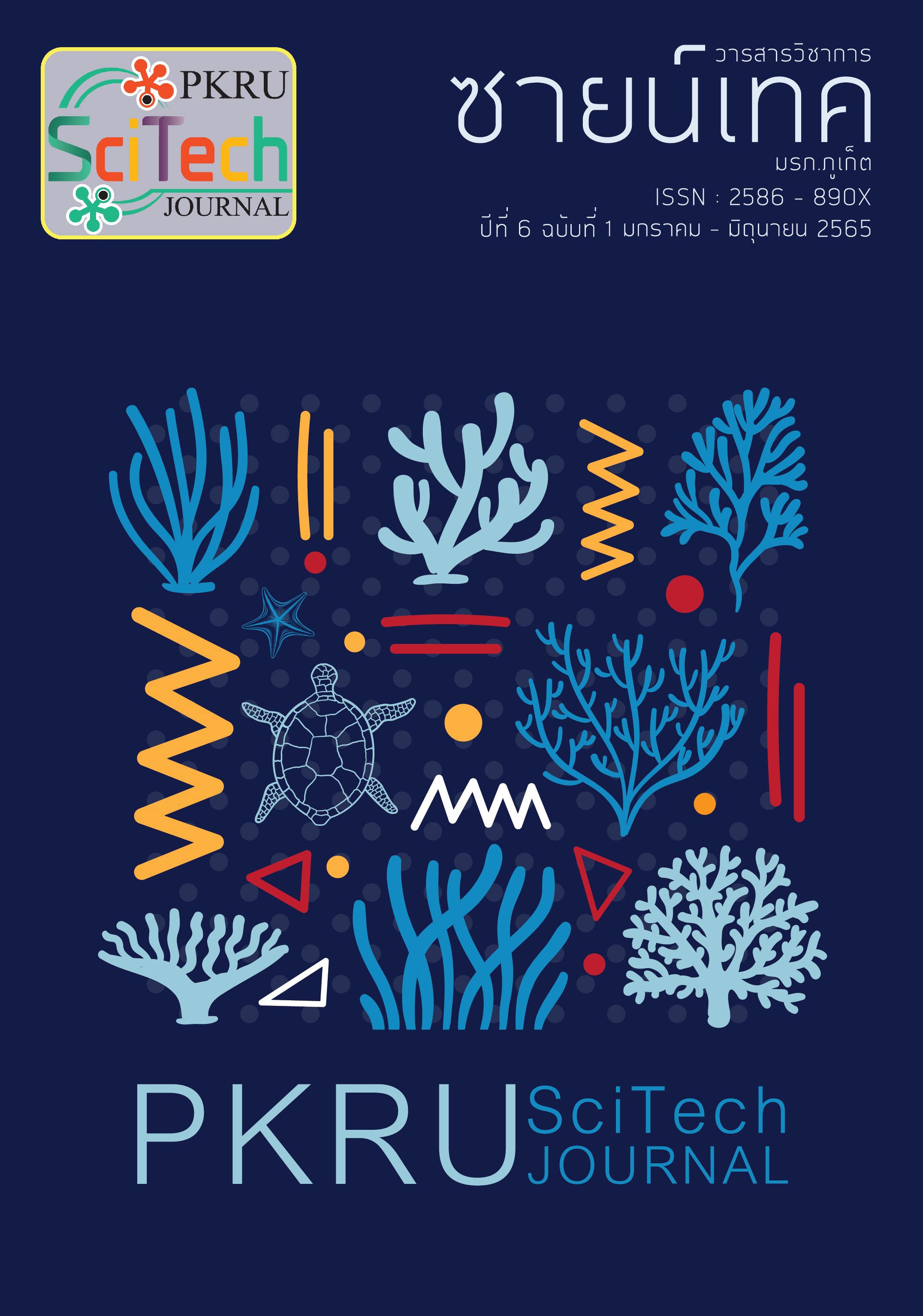Total Phenolics, Antioxidant, Anti-Tyrosinase, Anti-Collagenase and Cell Proliferation Activities of Chrysophyllum cainito Green Fruit Extract
Main Article Content
Abstract
Star apple (Chrysophyllum cainito L.), or Namnom in Thai, is a tropical edible plant. It has been reported to possess various beneficial medicinal properties such as antidiabetic and anti-inflammatory. The main active ingredients in star apple are flavonoids which have biological activity in antioxidation, anticancer, and anti-inflammatory. The objective of this research was to evaluate the biological activity of crude ethanol extract and their fractions (CCF1-CCF4) from the green fruit of star apple for application in cosmetic products. The results showed that the total phenolic content of the crude extract was 0.34±0.01 mg GAE/mL extract, which was slightly less than that of fraction CCF4 (0.41±0.01 mg GAE/mL extract). At an initial concentration of 5 mg/mL, fraction CCF4 displayed the greatest scavenging activity against DPPH radical (0.31±0.00 mg AAE/mL extract) and also the best reducing ferric iron (FRAP value 1.01±0.03 mg AAE/mL extract). Fraction CCF4 inhibited tyrosinase by 51.82% and at a final concentration of 50 µg/mL, fraction CCF4 inhibited 37.45% collagenase inhibition and stimulated the cell proliferation with 15.06%. The results of the study indicated that fraction CCF4 contains good active ingredients. It is suitable for development for being used as an ingredient in cosmetics.
Article Details

This work is licensed under a Creative Commons Attribution-NonCommercial-NoDerivatives 4.0 International License.
- The original content that appears in this journal is the responsibility of the author excluding any typographical errors.
- The copyright of manuscripts that published in PKRU SciTech Journal is owned by PKRU SciTech Journal.
References
Ebanks, J. P., Wickett, R. R., & Boissy, R. E. (2009). Mechanisms regulating skin pigmentation: The rise and fall of complexion coloration. International Journal of Molecular Sciences, 10(9), 4066-4087.
Fisher, G. J., Varani J., & Voorhees, J. J. (2008). Looking older: fibroblast collapse and therapeutic implications. Archives of Dermatology, 144(5), 666-672.
Luo, X. D., Basile, M. J., & Kennelly, E. J. (2002). Polyphenolic antioxidants from the fruits of Chrysophyllum cainito L. (Star apple). Journal of Agricultural and Food Chemistry, 50, 1379-1382.
Moo-Huchin, V. M., Moo-Huchin, M. I., Estrada-Leon, R. J., Cuevas-Glory, L., Estrada-Mota, I. A., Oritz-Vazques, E., Betancur-Ancona, D., & Sauri-Duch, E. (2015). Antioxidant compounds, antioxidant activity and phenolic content in peel from three tropical fruits from Yucatan, Mexico. Food Chemistry, 166, 17-22.
Vichit, W., & Saewan, N. (2015). Antioxidant activities and cytotoxicity of Thai pigmented rice. International Journal of Pharmacy and Pharmaceutical Sciences, 7(7), 329-334.
Nurrochmad, A., Dirman, W. A., Lukitaningsih, E., Rahmawati, A., & Fakhrudin, N. (2018). Effects of antioxidant, anti-collagenase, anti-elastase, anti-tyrosinase of the extract and fraction from Turbinaria decurrens Bory. Indonesian Journal of Pharmacy, 29(4), 188-197.
Vichit, W., & Saewan, N. (2016). Effect of germination on antioxidant, anti-inflammatory and keratinocyte proliferation of rice. International Food Research Journal, 23(5), 2006-2015.
Kubola, J., Siriamornpun, S., & Meeso, N. (2011). Phytochemicals, vitamin C and sugar content of Thai wild fruits. Food Chemistry, 126(3), 972-981.
Madhan, B., Krishnamoorthy, G., Rao, J. R., & Nair, B. U. (2007). Role of green tea polyphenols in the inhibition of collagenolytic activity by collagenase. International Journal of Biological Macromolecules, 41(1), 16-22.
Malešev, D., & Kuntić, V. (2007). Investigation of metal-flavonoid chelates and the determination of flavonoids via metal-flavonoid complexing reactions. Journal of the Serbian Chemical Society, 72(10), 921-939.


